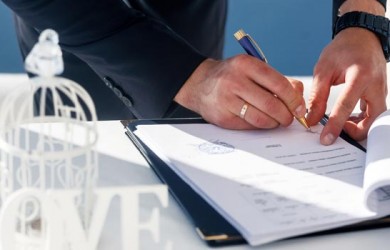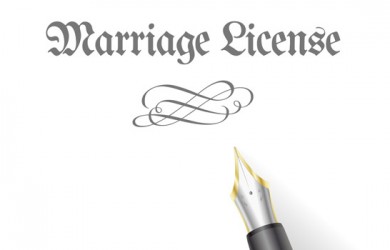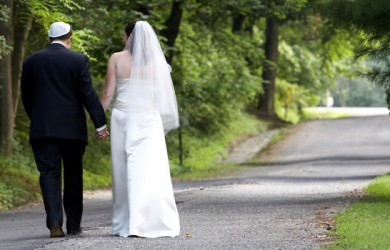Unlocking the Past: Marriage License History

Unlock Daily 30-Sec Tips for a Happier Relationship
👉 Subscribe FREEKey Takeaways
Marriage.com AI Quick Summary
Despite their common use today, the good old marriage license was not always grafted to the tapestry of civilized society.
There are many questions that one wonders about the origin of the marriage license.
What is the marriage license history? When was the marriage license invented? When were marriage licenses first issued? What is the purpose of a marriage license? Why are marriage licenses required? When did states start issuing marriage licenses? And who issues marriage licenses?
Essentially, what is the marriage license history in America? We are glad you asked.
Also watch: How to get a Marriage certificate
Marriage laws and marriage license history
Marriage licenses were absolutely unknown prior to the arrival of the Middle Ages. But when was the first marriage license issued?
In what we would refer to as England, the first marriage license was introduced by the church by 1100 C.E. England, a huge proponent of organizing the information obtained by the issuance of the marriage license, exported the practice to the western territories by 1600 C.E.
The idea of a marriage license took firm roots in the Americas of the colonial period. Today, the process of submitting an application for a marriage license is accepted practice throughout the world.
In some places, most notably the United States, state-sanctioned marriage licenses continue to garner scrutiny in communities that believe the church should have the first and only say on such matters.
Early marriage contracts
In the earliest days of the broad issuance of marriage licenses, old marriage licenses represented a sort of business transaction.
As marriages were private affairs commenced between members of two families, the licenses were seen as contractual.
In a patristic world, the bride may not have even known that the “contract” was guiding the exchange of goods, services, and cash holdings between two families.
Indeed, the end of the marriage union was not only to ensure the prospect of procreation, but also forged social, financial, and political alliances.
Further, in the state-run organization widely known as the Church of England, priests, bishops, and other clergy had a substantial say in authorizing a marriage.
Eventually, the church’s influence was tempered by the creation of secular laws regarding marriage licensing.
While creating a substantial revenue stream for the state, the licenses also helped municipalities craft accurate census data. Today, marriage records are among the vital statistics held by developed nations.
The arrival of the Publication of Banns
As the Church of England expanded and solidified its power throughout the country and its robust colonies in America, colony churches adopted the license policies held by the churches and judicatories back in England.
In both state and church contexts, a “Publication of Banns” served as a formal writ of marriage. The Publication of Banns was a cheap alternative to the considerably more expensive marriage license.
Indeed, the State Library of Virginia has documents that describe banns as a widely disseminated public notice.
Banns were shared orally at the town center or published in town publications for three consecutive weeks after the formal nuptials had been completed.
The face of racism in the American South
It is widely reported that in 1741 the colony of North Carolina took judicial control over marriages. At the time, the primary concern was interracial marriages.
North Carolina sought to prohibit interracial marriages by issuing marriage licenses to those deemed acceptable for marriage.
By the 1920s, more than 38 states in the US had crafted similar policies and laws to promote and maintain racial purity.
Up the hill in the state of Virginia, the state’s Racial Integrity Act (RIA) – passed in 1924 made it absolutely illegal for partners from two races to marry. Amazingly, the RIA was on the books in Virginia Law until 1967.
Amid an era of sweeping racial reform, the U.S. Supreme Court declared that the state of Virginia’s prohibition on interracial marriage was absolutely unconstitutional.
The rise of State Authoritarian Control
Prior to the 18th Century, marriages in the United States remained the primary responsibility of local churches. After a church-issued marriage license was signed by an officiant, it was registered with the state.
By the late 19th century, the various states started to nix common-law marriages. Finally, the states decided to exert considerable control over who would be allowed to marry within the state’s borders.
As stated earlier, the government sought control of marriage licenses to compile vital statistics information. Further, the issuance of the licenses provided a consistent revenue stream.
Homosexual marriages
Since June 2016, the United States has authorized same-sex unions. This is the brave new world of marriage license issuance.
Indeed, same-gender partners can walk into any country courthouse and receive a license to have their union recognized by the states.
While the Supreme Court’s ruling on this issue remains an area of contention with churches, it is the understood law of the land.
A word about the license rebellion
During the 1960s, many partners railed against governments by flatly rejecting the idea of a marriage license. Instead of obtaining licenses, these couples simply cohabitated.
Rejecting the idea that “a piece of paper” defined the properness of a relationship, couples just continued to cohabitate and procreate without a binding document between them.
Even in today’s context, a host of fundamentalist Christians allow their followers the right to marry without a state-issued license in hand.
One particular gentleman, a minister, named Matt Trewhella, will not allow parishioners of Mercy Seat Christian Church in Wauwatosa, Wisconsin, to marry if they present a license.
Final thoughts
While there has been an ebb and flow feeling to marriage licenses over the years, it is clear that the documents are here to stay.
No longer associated with the exchange of goods and services between families, the license does have an impact on the economics after the end of a marriage.
In most states, individuals married with the authority of a license must equally share the assets obtained through the course of the marriage should they choose to end the union.
The premise is this: Income and property obtained during a marriage should be shared equitably between the parties who chose to “become one flesh” at the beginning of the blessed union. It makes sense, don’t you think?
Be thankful for marriage licenses, friends. They offer legitimacy to the union in case there happen to be legal issues along the way. Also, the licenses help the states take a good account of their people and their situations in life.
 Tips
Tips
Write your tip or submit a video tip
All tips are reviewed before the publishing.
Share this article on
Want to have a happier, healthier marriage?
If you feel disconnected or frustrated about the state of your marriage but want to avoid separation and/or divorce, the marriage.com course meant for married couples is an excellent resource to help you overcome the most challenging aspects of being married.
Recent Articles
Related Quizzes
Unlock Daily 30-Sec Tips for a Happier, Healthier Relationship
👉 Subscribe FREE on YouTube We'd love your feedback!
We'd love your feedback!
 Expert Q&A
Expert Q&A
Ask your question related to this topic & get the support you deserve from experts.



















 Thanks for your feedback!
Thanks for your feedback!